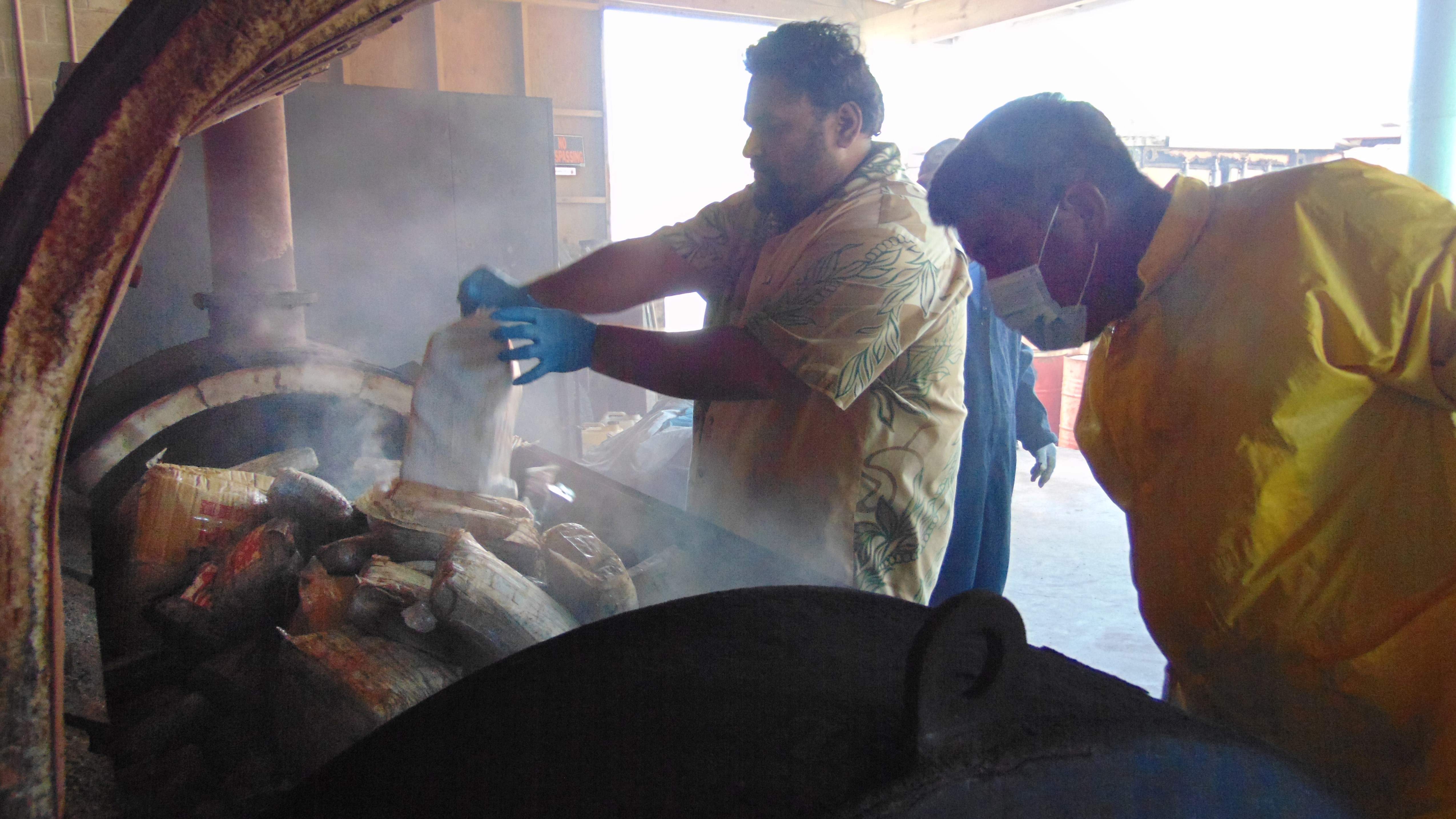Cocaine laden ghost boat washes up on remote Pacific island
Globally, cocaine manufacturing doubled in four years between 2014 and 2018

Your support helps us to tell the story
From reproductive rights to climate change to Big Tech, The Independent is on the ground when the story is developing. Whether it's investigating the financials of Elon Musk's pro-Trump PAC or producing our latest documentary, 'The A Word', which shines a light on the American women fighting for reproductive rights, we know how important it is to parse out the facts from the messaging.
At such a critical moment in US history, we need reporters on the ground. Your donation allows us to keep sending journalists to speak to both sides of the story.
The Independent is trusted by Americans across the entire political spectrum. And unlike many other quality news outlets, we choose not to lock Americans out of our reporting and analysis with paywalls. We believe quality journalism should be available to everyone, paid for by those who can afford it.
Your support makes all the difference.A ghost boat with 649kg of cocaine hidden in a compartment under its deck has washed up on a remote atoll in the Marshall Islands, in what authorities believe to be the largest-ever haul of the drug in the Pacific nation.
The discovery was made by authorities last week who believe the boat could have been adrift for a year or more.
Attorney general Richard Hickson said the 5.5m fibreglass vessel was found at Ailuk atoll and noted that it most likely drifted across the Pacific from central or south America, the AFP news agency reported.
Besides keeping a small amount for the US drug enforcement authorities for analysis, the Pacific nation authorities incinerated the rest on Tuesday.
It is not the first time that debris driven by Pacific Ocean currents has reached the Marshall Islands, which has recorded several instances of drug hauls along its shoreline over the past 20 years.
Cocaine is one of the most widely used narcotics across the world. According to the UN Office on Drugs and Crime’s World Drug Report 2020, cocaine manufacturing has consistently increased since 2014 - doubled between 2014 and 2018 - but the rate of annual increase has slowed down over the years.
The report estimated that global manufacture of cocaine may have reached its highest level ever in 2018 at 1,723 tonnes. In 2018, the total global quantity of cocaine seized was 1,311 tonnes – an increase of 2.7 per cent over the preceding year, the report said.
The bulk of cocaine quantity seized in 2018 was from the Americas, about 85 per cent of the total seized across the globe, and from that the largest portion (55 per cent) was seized from South America.
To escape seizures, criminals have been using all kinds of methods to peddle drugs, including cocaine. In November more than a tonne of cocaine was found in a banana pulp shipment at a port in London.
In October this year, an aircraft carrying about 400kg of cocaine crashed in central Mexico after an airborne chase with the authorities. Also in October, police authorities in Paraguay discovered 2.3 tonnes of cocaine that was hidden in a charcoal shipment bound for Israel.



Join our commenting forum
Join thought-provoking conversations, follow other Independent readers and see their replies
Comments